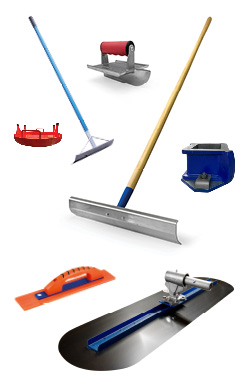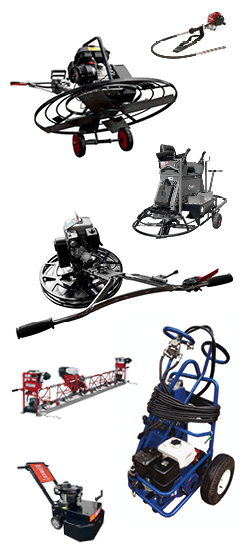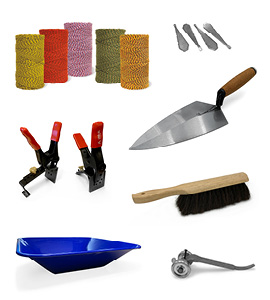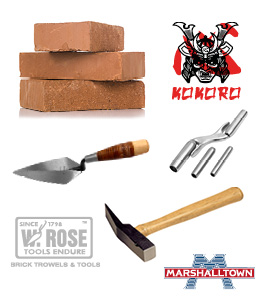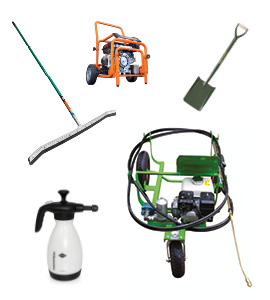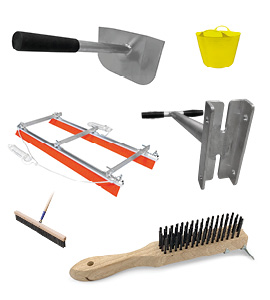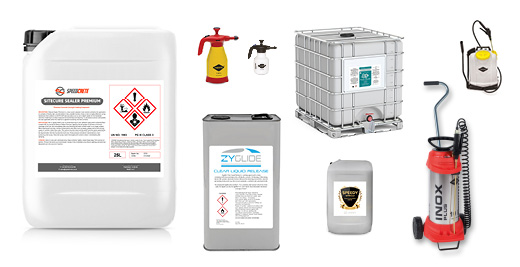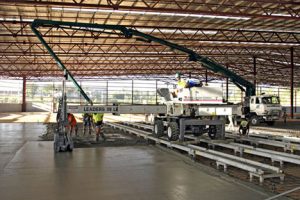 Introduction
Introduction
Misconceptions arise in the belief that laser technology often anwsers all our prayers in the specific requirement of a flat floor. The truth is that although these laser guided tools have developed an ability to achieve flatter floors, an immense amount of work still remains to be done following the screeding process. Such processes presently need to be performed with the use of high tolerance flooring tools. Let us look at the range of commonly used hand tools.
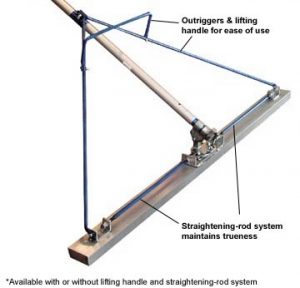 The Check Rod
This Replaces the bullfloat to correct and straighten the surface following the screeding operation.The slab should be worked systematically placing special emphasis on working the tool at 90° to the intitial screed pass, by this any inconsistencies caused by the screed process should be resolved. In turn also operate this tool at 45° angles to elimate any inconsistencies caused by the tool itself.
The Check Rod
This Replaces the bullfloat to correct and straighten the surface following the screeding operation.The slab should be worked systematically placing special emphasis on working the tool at 90° to the intitial screed pass, by this any inconsistencies caused by the screed process should be resolved. In turn also operate this tool at 45° angles to elimate any inconsistencies caused by the tool itself.
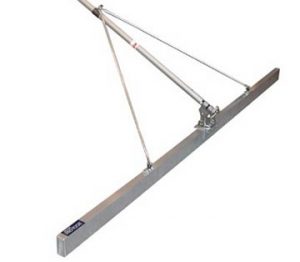 The Bump Cutter
The Bump Cutter
Available in either 5"x2" magnesium box section or incorporated within a channel radius float section with cutting edge tool is used to straighten the concrete surface. Excess material cut from high spots on the surface is used to fill any obvious low spots. As this tool operates on a smaller surface area than the check rod it is used later in the curing stage. The tool should be operated in the same way by attacking the slab at 90° to the screed pass. Multiple passes produce flatter surfaces.
 Saw Beam
Saw Beam
Supplied in 5"x2" magnesium box section and available in lengths up to a maximum of 24ft (7.23m) this tool is normally used in super flat operations. When so used maximum lengths do not generally exceed 16ft (5m) and the saw beam is applied directly behind the first pass of the check rod & bump cutter. Following the pass of the saw beam the check rod and bump cutter will be applied for a second final stage prior to final power trowelling operations.
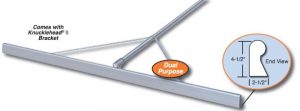 Lightweight Bump Cutter
Lightweight Bump Cutter
Manufactured in lightweight magnesium, the LWT Bump cutter takes the form of a keyhole section and is more generally preferred for improving surface alignment behind the Somero laserscreed or copperhead screeding machines. These LWT bump cutters are normally supplied in 10ft (3m) or 12ft (3.65m) lengths but 15ft (4.5m) is not uncommon.
